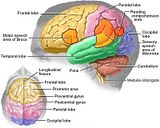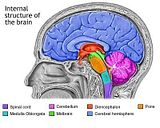The cause of astrocytoma is not known. Brain cancer may occasionally be caused by previous radiation treatments; however, x rays are not believed to play a role. As of 2001, studies have indicated that the moderate use of handheld cellular phones does not cause brain cancer; ongoing research will determine if long-term cellular phone use causes an increase in cancer incidence. Some studies suggest that brain tumors may occur more frequently in people who have occupational exposure to certain chemicals, including some pesticides, formaldehyde, vinyl chloride, phenols, acrylonitrile, Nnitroso compounds, polycyclic aromatic hydrocarbons, lubricating oils, and organic solvents. The greatest risk is associated with exposure before birth or during infancy.
There is a slightly higher incidence of astrocytoma in the siblings and parents of people with this tumor; however, only one type of astrocytoma is known to have a genetic cause. The rare subependymal giant cell astrocytoma occurs in conjunction with tuberous sclerosis, a hereditary disorder.
A wide variety of symptoms develop as a result of astrocytoma, including the following:
There is a slightly higher incidence of astrocytoma in the siblings and parents of people with this tumor; however, only one type of astrocytoma is known to have a genetic cause. The rare subependymal giant cell astrocytoma occurs in conjunction with tuberous sclerosis, a hereditary disorder.
A wide variety of symptoms develop as a result of astrocytoma, including the following:
- headache
- nausea and vomiting
- neck stiffness or pain
- dizziness
- seizures
- unsteadiness in walking or unusual gait
- lack of coordination, decreased muscle control
- visual problems such as blurring, double vision, or loss of peripheral vision
- weakness in arms or legs
- speech impairment
- altered behavior
- loss of appetite








0 comments:
Post a Comment